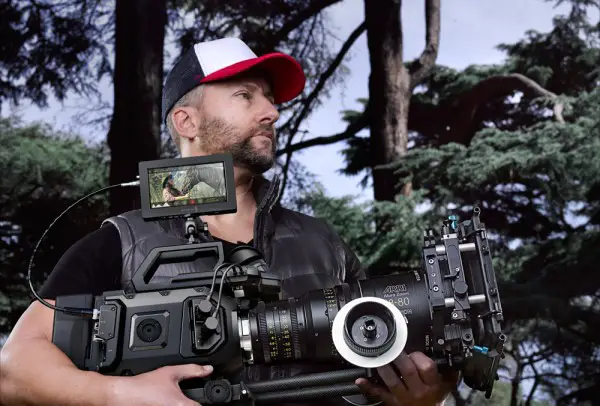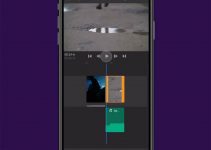While I am editing my Video Assist 4K review, I wanted to share some quick footage I shot with the URSA Mini 4.6K. A few weeks back, I had the delightful opportunity to spend an afternoon with the Blackmagic URSA Mini 4.6K camera and went down to Kingston to get a few quick shots of the Kingston Rowing Club base and see what this camera can do. I didn’t have the camera for a longer period to justify a full blown review, so consider this a “real world” mini-review. My goal was to shoot more high contrast scenes to see how well it copes with difficult environments where a wide range of blacks, shadows and highlights are prevalent so as to test the dynamic range (for a lack of a better word) without using DR testing charts. I did not have time to test slow-motion or other aspects such as rolling shutter effects/moire/aliasing etc.
Music by Chris Zabriskie – http://freemusicarchive.org/music/chr…
See more of Nick’s work here: http://www.barulov.com/
Also, thanks to Visual Impact and Holdan UK for providing me with the URSA Mini 4.6K camera and accessories for this demo.
Order your URSA Mini 4.6K here
Camera: URSA Mini 4.6K with URSA Viewfinder
- UHD ProRes HQ 422 30p and some 60p
- 4.6K Raw 3:1 – some shots
Lenses:
- Canon EF 70-200mm f2.8L IS
- Canon EF-S 17-55mm f2.8 IS USM
ND Filter: HoyaPro ND 5 stops 77mm screw-on
Power by: Anton Bauer CINE batteries
Slider: Rhino Slider EVO (short base)
Post: Resolve 12.5 – basic grade with built-in Kodak 2383 LUT and some other minor tweaks

that’s definitely not me, but my goal is to work towards this stance 🙂
Having owned the original BMCC 2.5K EF, the URSA Mini 4.6K was quite the eye opening experience! The original BMCC had a fantastic image in itself, one that is still on par today, but there is something about the new sensor I can really put my finger on – it just oozes such a vast range of tonality and organic texture in the footage;
I don’t know if it’s 15 stops DR as the manufacturer claims (that requires scientific charts), but it’s more than I’ve seen from any other BMD camera I’ve shot with be it the BMCC 2.5K or Production Camera 4K, or any other camera for that matter. The C300 Mark II was something I shot with not that long ago, but even compared to it – just by looking at stuff side by side (even on an 8bit non-reference grade monitor) the 4.6K just has so much more going for it image-wise.
Here’s a summary of my findings:
The Good:
- Incredible dynamic range! The URSA Mini 4.6K is easily my favourite and best BMD camera I’ve shot with.
- Footage is easy to grade in Resolve, with tons of room for heavier grade
- Native Canon EF Mount – solid, you can use a wide range of affordable and some not so affordable EF lenses, Canon or third party.
- This was a pre Firmware 4.0 test – so menu was familiar and easy to get around
- Construction – feel very well built, magnesium alloy
- 5-inch flip out screen – very sharp, nice 1080p touch screen
- URSA Viewfinder is beautiful – sharp, robust construction.
- 3G-SD Outputs
- Dual Cfast 2.0 cards
- With the right batteries and lens combo, it can be nicely balanced on shoulder for handheld
- Wide range of formats – ProRes, Raw, Compressed Raw at various resolutions
- Slow-motion – up to 60p in full sensor mode, 120fps in window mode
The not so good:
- XLR inputs mounted vertically on top of camera, can be weird for cabling dangling on side
- Everything is a menu dig – ISO/WB etc – requires the Flip-Out 5-inch screen to be opened so you have access to the menu button
- Not enough re-assignable buttons
- No built-in ND filters – wasn’t so much of a problem for me, but can be for some folks used to more ENG cameras
- Side handle Aperture buttons didn’t work for me all the time
- Side Handle design can use a bit more “palm friendly” re-design (make it like the one on the FS5)
- Requires – AB or V-mount batteries for power – those can get heavy and expensive
- CFast 2.0 – can be pricey
- Produces very large files, especially in Raw formats – make sure you have A LOT OF Hard Drive space to save and backup your footage.
- The URSA Viewfinder diopter is very stiff to adjust
- Whole setup, as minimal as it was (camera with side handle, battery, 17-55mm zoom for handheld, and screw on ND filter – no 15mm bars, no mattebox, no follow focus) can get a bit heavy after a few minutes of continuous handheld shooting.
Again, this was not a scientific test designed to accurately determine dynamic range or any other parameters. The shoot below was done in less than 2 hours with only available light and the fixtures inside the Club. Lenses used were the 70-200mm F2.8L II IS from Canon, and my personal favourite Canon lens – the EF-S 17-55mm f2.8 IS.
Huge thanks to my buddy Nick Barulov, who brought his C100 Mark II along and also let me use his super-fluid Rhino Slider EVO and Manfrotto tripod. I shot most of it in UHD ProRes HQ 422 in 30p (there may be some shots in 60p) and also a few interior shots in 4.6K Raw 3:1.
P.S. I am not a professional colourist and fairly new to Resolve, so bear that mind. The grade was super basic – just a plain Kodak 2383 LUT with some minor contrast and exposure adjustments to even out the changing light outside. Also, I did not have enough time to test everything – such as low light and slow-motion and you could think of at least 10 other things I did not do. I wanted to, but we only had a very small window to get it done. Hopefully, I’ll get the camera again and spend more time to test other things. If you have any specific requests, put them in the comments section below, and I’ll try and do it next time I get to spend some time with the camera.
B&H Links:
Blackmagic URSA Mini 4.6K Digital Cinema Camera (EF-Mount) – $ 4,995
Blackmagic URSA Mini 4.6K Digital Cinema Camera (PL-Mount) – $ 5,495
Disclaimer: As an Amazon Associate partner and participant in B&H and Adorama Affiliate programmes, we earn a small comission from each purchase made through the affiliate links listed above at no additional cost to you.



Just fyi, the amazon link is to the Ursa Mini 4K, not 4.6K. Thats why its over a grand cheaper on that link.
Thanks, Matt! We’ve fixed it already!